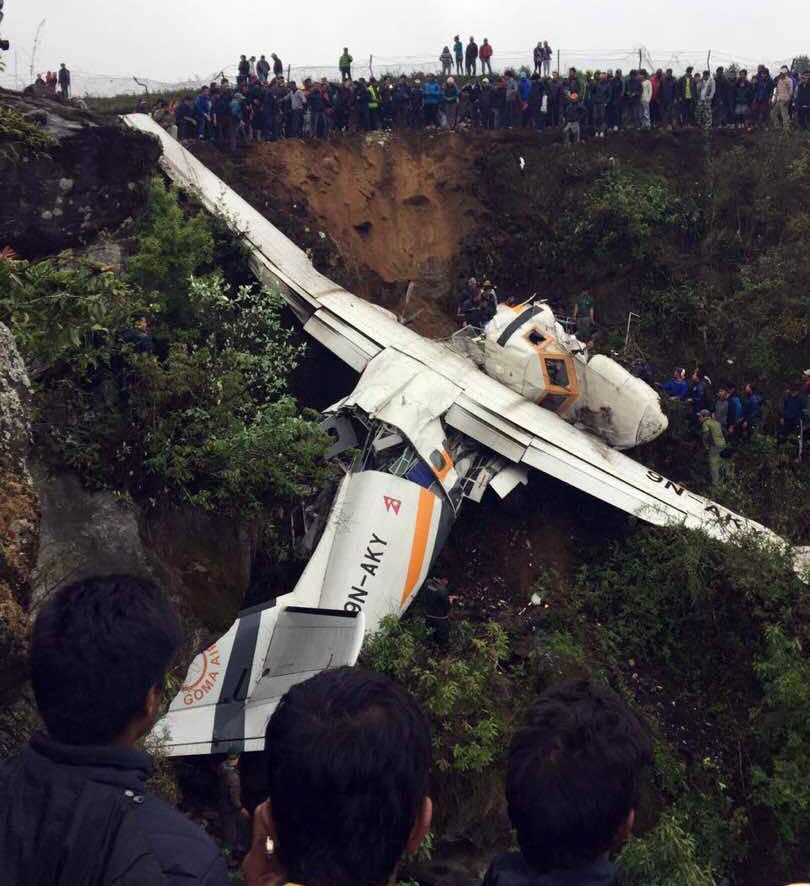Fatal air crash in Lukla airport major setback on eve of ICAO audit
Fatal air crash in Lukla airport major setback on eve of ICAO audit
Published: 05:30 am Jun 01, 2017

Kathmandu, May 31 Saturday’s fatal crash at Lukla involving the Let-410 aircraft, literally on the eve of the audit mission of the International Civil Aviation Organisation, has once again raised serious questions about the continuing state of civil aviation, regardless of the purported improvement claims made by the Civil Aviation Authority of Nepal. The ill-fated Goma Air flight, operating in marginal visual flight rule conditions, and impacting terrain short of the steep up-sloping runway wears an uncanny resemblance with approach-and-landing accidents associated with up-sloping runways, including the fatal one in 2008 and another non-fatal at Simikot. Several publications from International Civil Aviation Organisation and Flight Safety Foundation warn of the visual-illusion related hazards induced by the very appearance of airport approach, causing pilots to descend prematurely and contact terrain well ahead of the designated area on the runway, according to aviation experts. In Lukla, this hazard is further exacerbated by inaccurate wind information conveyed to the flight crew by the control tower, they added. “The wind information provided to flights by Lukla tower is measured by an automatic wind speed sensor that is neither sited as per relevant world meteorological organisation guidelines nor is representative of wind conditions an aircraft encounters over the Dudhkoshi gorge before shortly arriving over the Lukla airport strip.” The flight crews during their final approach are required to maintain an air speed that barely keeps the aircraft out of stall conditions for ensuring a complete stop on the very limited runway length ahead. “This deliberate inadequate air speed margin, technically called Vref, leaves the aircraft vulnerable to the effects of possible downdrafts and wind speed variations in the final few seconds before touchdown,” a veteran Lukla-frequenting captain explained. As per the official aeronautical information publication-Nepal, the Department of Hydrology and Meteorology is the authorised provider of aviation meteorology in Nepal, but interestingly, the DHM is not involved in providing necessary services in Lukla. Even the maintenance and operation of critical meteorological equipment at Lukla airport is not subject to DHM oversight and monitoring, a CAAN official said. Even the posting of airport chief as well as tower personnel at Lukla, borders on the ludicrous, where political pressure is customarily invoked by aspirants and spending a mere year at the high altitude station allows individuals to score the necessary ‘geography-related’ marks to outdo others in the promotions by a significant margin, he added. “Amusingly, almost all of the higher ups in the CAAN administration have secured their places by seeking postings in Lukla and Jomsom in the not-so-distant past while these airports are not controlled airports requiring formal air traffic controllers, but are mere flight information stations and in no way help in improving the professional competence of those seeking postings.” Lukla airport, destined to be forever manned by greenhorns, will never be in a position to provide flight crew with sensible weather observations, a skill that often takes experienced weathermen years to perfect, a CAAN manager said. READ ALSO:
